Year in climate: Extreme weather events prove climate change is already here
From extreme temperatures, to fires and floods, 2021 was a year of extremes.
This may have been the year the world finally began to pay attention to the mayday calls for climate change and the harmful effects warming global temperatures will have -- not just on the environment, but on human life.
Scientists have long warned of the calamity that could result from rising global temperatures. Predictions such as extreme temperature events, the increase of severe drought and more intense storms have all come to fruition in 2021 -- around the world and close to home.
People will soon feel the impacts in their own backyards, President Joe Biden said on Nov. 2, his last day at the 2021 United Nations Climate Change Conference in Glasgow, Scotland. There, world leaders emphasized that climate change is already happening and costing billions of dollars -- about $100 billion in the U.S. alone.
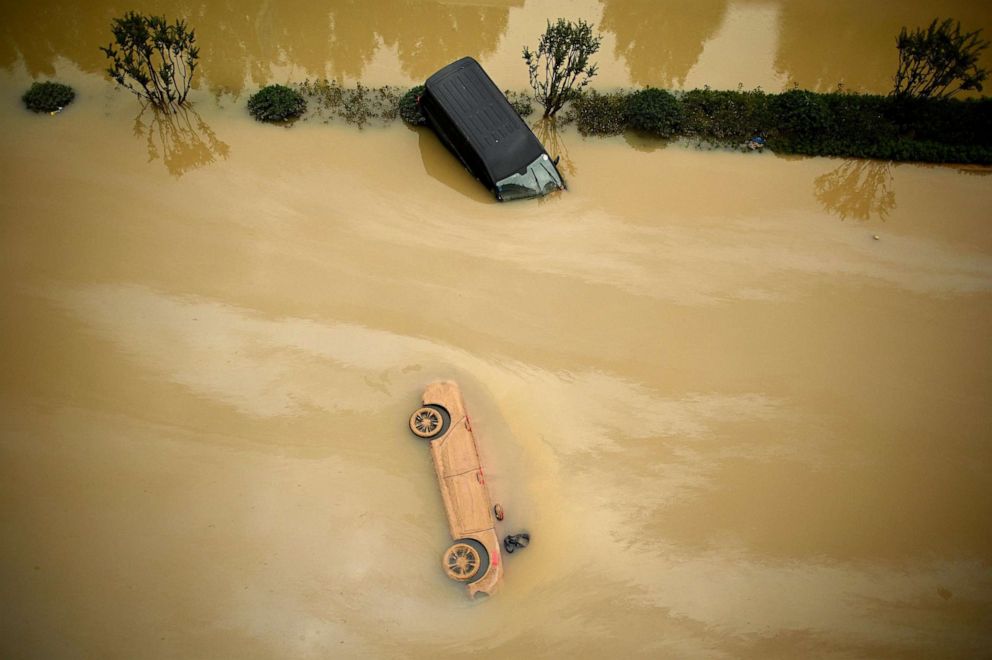
The damage done to the Northern hemisphere this year alone has been "devastating," Jason Smerdon, a climate scientist for Columbia University's Lamont Doherty Earth Observatory, told ABC News.
"So this is just one more piece of bad news and lots of events that are impacted by global warming," Smerdon said.
Here are some of the biggest weather events to occur in 2021:
Deadly flooding
Devastating flash flooding events killed thousands of people all over the world in 2021. The majority of the events were a result of record rainfall.
A state of emergency was declared in Washington state last month after damaging floods resulting from multiple occurrences of "atmospheric rivers," huge plumes of precipitation extending from the Pacific Ocean and into the Northwest. The damage to homes, public infrastructure and area business centers was estimated to cost at least $50 million, local newspaper the Bellingham Herald reported.
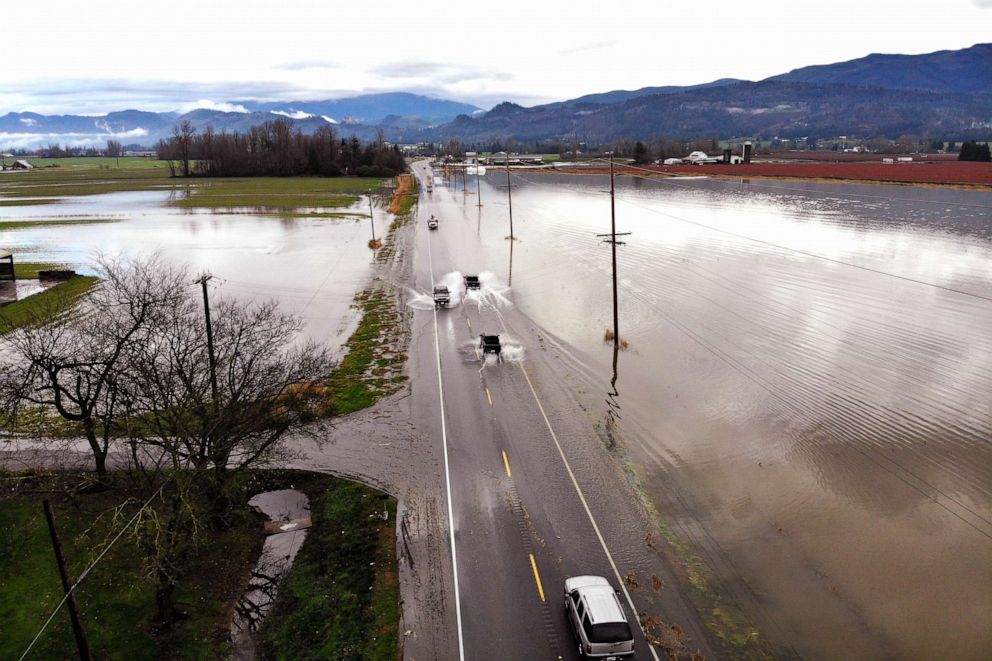
A ferocious storm in the Detroit area on July 24 flooded Interstate 94 and knocked out power to hundreds of thousands of people. Trees, houses and businesses sustained major damage in the storm.
Also in July, hundreds of people were either dead or unaccounted for in countries in Western Europe after days of record rainfall caused river banks to burst, triggering dangerous flooding in Germany, Belgium and southern parts of the Netherlands and Switzerland.
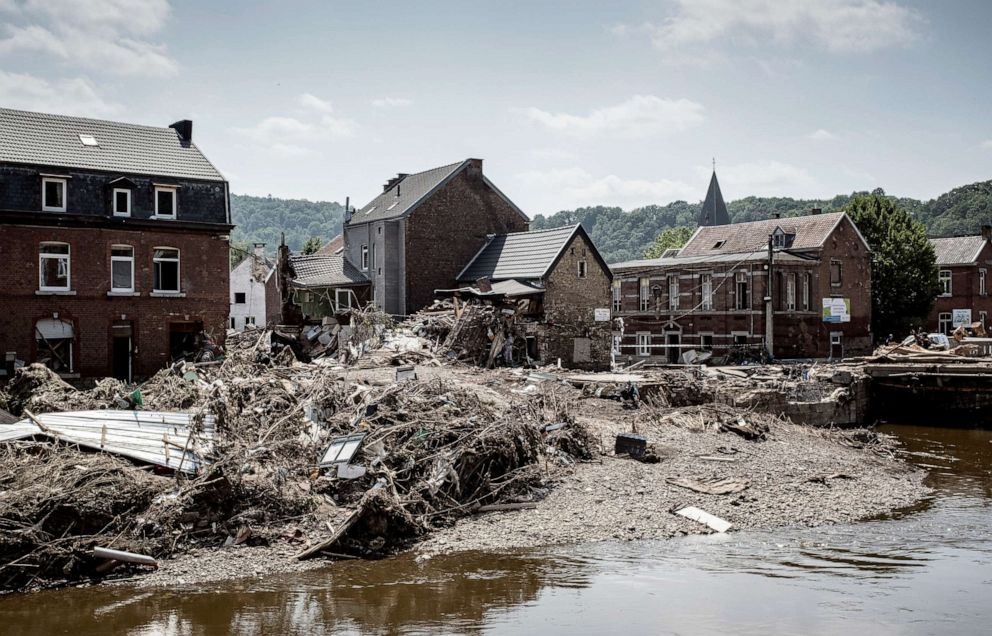
Dozens of people were also killed, and hundreds of thousands more displaced, after nearly a year's worth of rain came down in just three days in Henan province in July. Its capital, Zhengzhou, is located on the banks of the Yellow River. And the cleanup wasn't the sole focus amid the aftermath. Food security and supply in the country was disrupted after major roadways were transformed into riverbanks.
One-in-100-year floods are now happening so often, the term may soon need to change, Robert Mason, extreme hydrologic events coordinator and Delaware River master for the U.S. Geological Survey, told ABC News. While the term is based on existing data, it is possible for major floods happen in back-to-back years, so the USGS is looking at different ways of quantifying back-to-back major flooding events Mason said.
Raging wildfires
In August, wildfires burning through the drought-ridden Siberian forest were so widespread, the event was larger than all the fires raging this summer around the world combined.
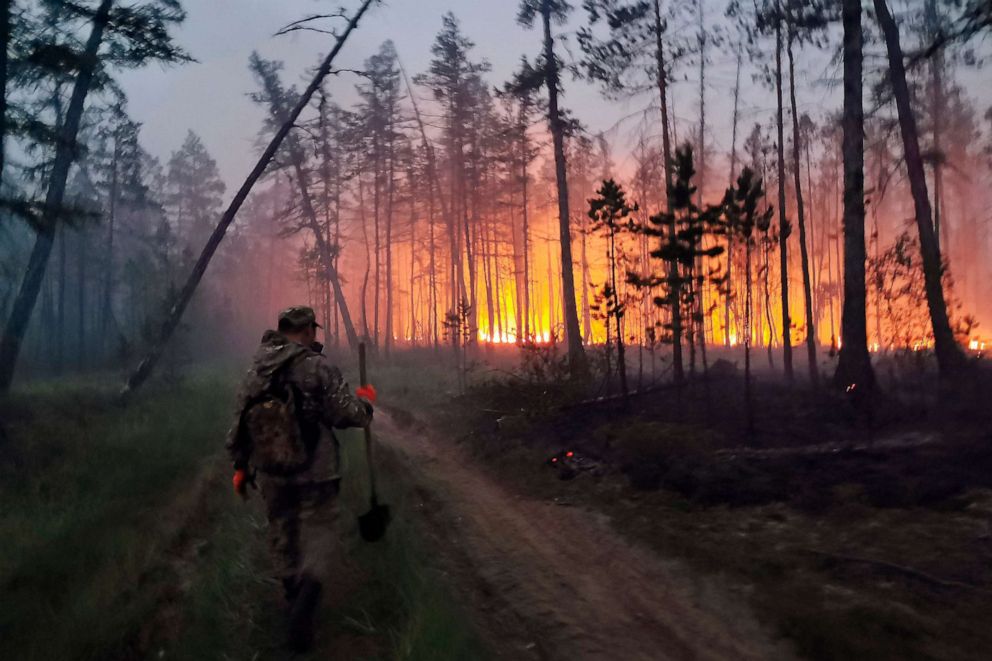
At the same time, a major wildfire ravaged a pine forest and burned homes nears Athens, Greece, on the heels of the country's worst heat wave that left forests full of dry fuel to further spread the blaze.
Dangerous fire conditions also continued in the Western U.S. At several points over the summer, at least 50 fires were burning uncontained.
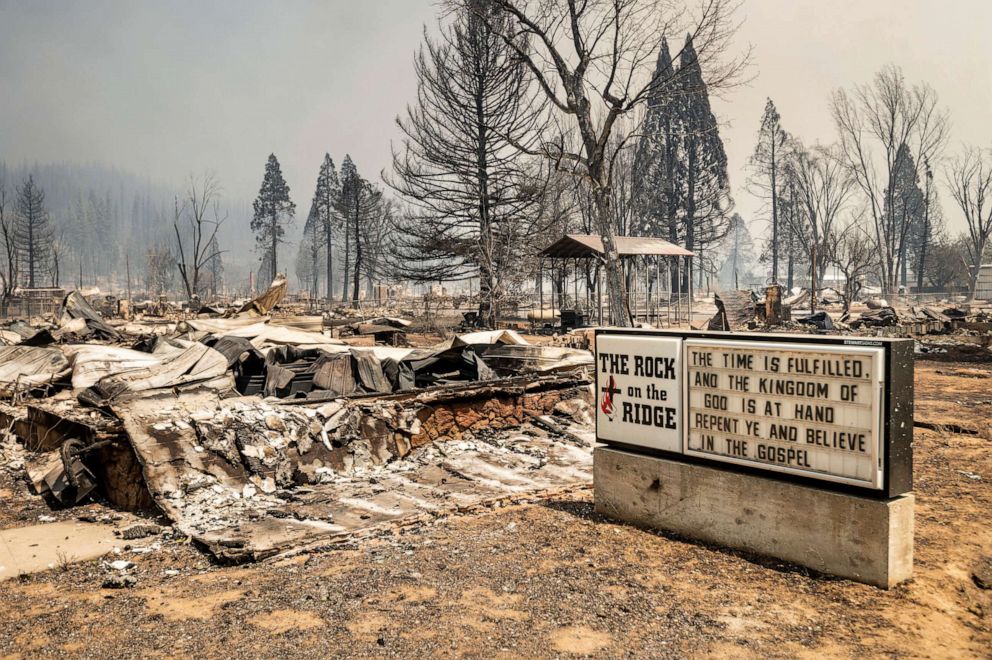
Fires in California continued to break records. The Dixie Fire, the largest non-complex fire in California state history that scorched through nearly 1 million acres, decimated the town of Greenville -- destroying more than 100 homes and leaving next to nothing untouched by flames in the downtown neighborhood.
Intense drought
Not only does drought have the ability to exacerbate wildfire conditions, but it also has the potential to debilitate communities.
For decades, scientists have been predicting an intensifying drought, especially in the Western U.S. A megadrought, a term used to describe a severe and intense drought that spans a couple of decades, is currently plaguing much of the region, depleting reservoirs to the lowest levels in history and threatening the agricultural industry.
Water levels in Lake Mead and Lake Powell, the two largest reservoirs in the country, hit alarming lows, and the first-ever water shortage was declared for Lake Mead. This year was California's driest in a century, and the West could face a severe water crisis if the trends continue.
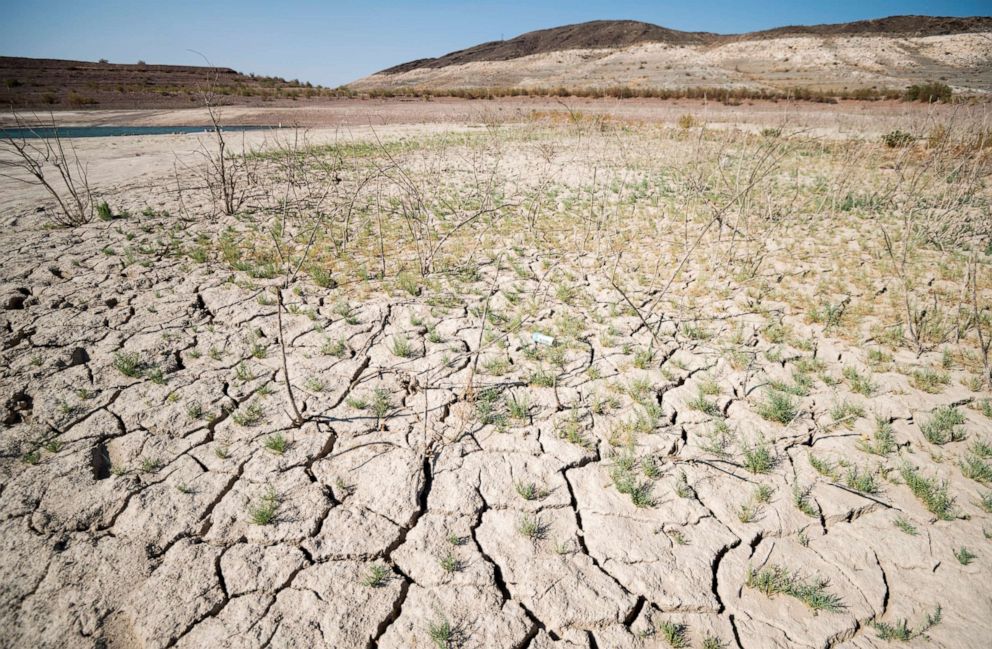
The megadrought is directly linked to climate change, and there will not be much improvement in the next century, even if precipitation were to suddenly increase, scientists say. About half of the severity of the ongoing megadrought has been attributed to warming temperatures alone, Daniel Swan, a climate scientist at UCLA, told ABC News.
"Without that warming, the drought would arguably not be a megadrought at all," he said.
Extreme temperatures
Warming global temperatures don't always translate into warming events. Sometimes, the pendulum swings to the other extreme -- freezing temperatures.
The polar vortex that slammed Texas and other nearby states with unprecedented winter weather in February is the costliest winter event to ever occur in the U.S.
More than 10 million customers in the state were without power for more than a week following back-to-back winter storms that brought snow and arctic temperatures, causing at least $20 billion in damage and killing more than 170 people.
Also in February, Arctic air plagued the Chicago area with temperatures that felt like negative 30 to 50 degrees Fahrenheit. The cold snap nearly broke records, with more than a two-week stretch of temperatures of 25 degrees or below.
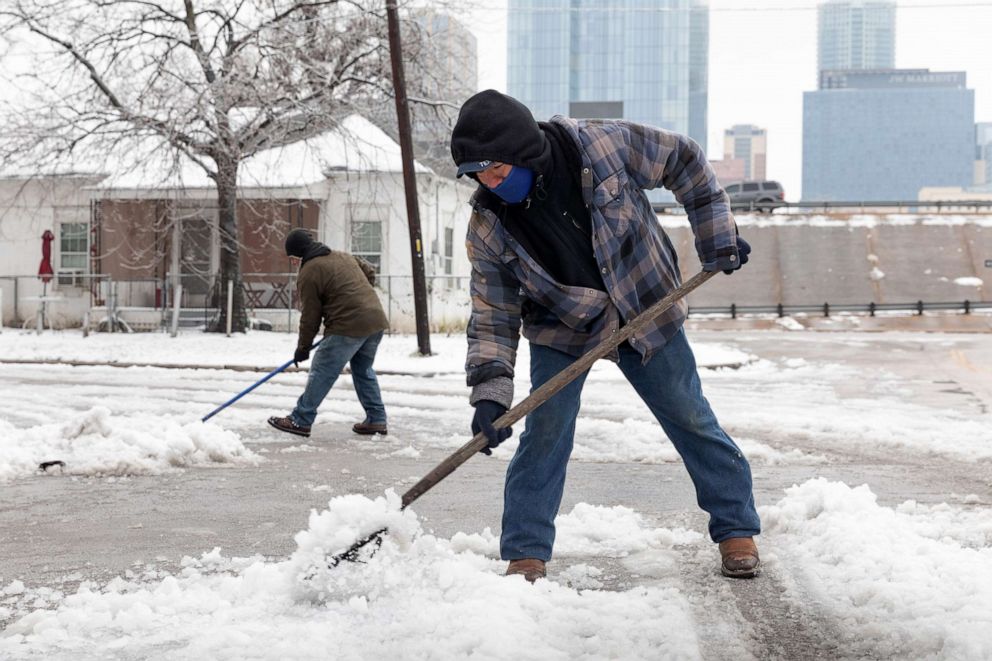
The Pacific Northwest, known for its chilly, wet temperatures, experienced the opposite problem over the summer with multiple deadly heat waves.
A historic heat wave in the region sent temperatures soaring past 100 degrees in major cities like Seattle and Portland in June. Temperatures hit 116 degrees in some places for days on end. Another heat wave blanketed the region one month later as dozens of wildfires burned uncontained nearby.
The majority of the residents in the area, acclimated to the typical damp climate, were not equipped with air conditioning, causing concern for the health of vulnerable populations.
"When there's not relief at night, and people don't have access to air conditioning, then we're gonna see a lot more heat-related illnesses and stress," Larry O'Neill, Oregon's state climatologist, told ABC News.
The heat wave also exacerbated the megadrought, leaving even less water to maintain local biodiversity and for agriculture, said O'Neill, adding that a lot of the vegetation in the area is "drought-stressed."
These events are likely the result of a weakening polar vortex, climate scientist Jessica Moerman, vice president of science and policy at the Evangelical Environmental Network, a faith-based environmental group, told ABC News.
Powerful storms
This year did not break records in the same way 2020 did, but it only took one storm to cause a record amount of damage after it tracked through the U.S.
The behavior of Hurricane Ida is a prime example of climate change, according to scientists. The dangerous storm barreled through the Caribbean before taking aim at the Gulf Coast of the U.S. In the 24 hours before making landfall in Louisiana on Aug. 29, it strengthened by a whopping 55 mph, making it a Category 4 storm with maximum sustained winds of up to 150 mph.
Hurricanes have tended to intensify more rapidly over the last three years, likely due to the warmer water available, Philip Klotzbach, a research scientist at Colorado State University's Department of Atmospheric Science, told ABC News before the 2021 hurricane season began.
Ida then remained a major hurricane over Louisiana for nine hours after making landfall, something meteorologists say has never happened before.
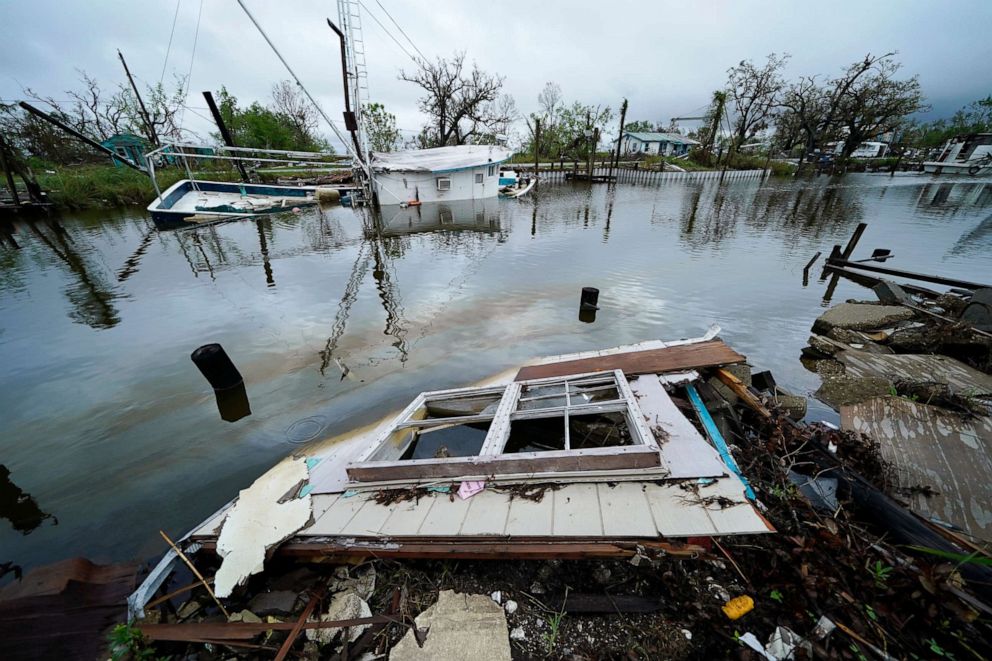
But the damage did not stop as the remnants of Ida left the South. As the system collided with a cold front, it dumped torrential rain and spawned tornadoes and devastating flash flooding across the Northeast days after it left Louisiana. As much as 5 inches of rain per hour were reported in highly urbanized areas in New York and New Jersey. Roadways in parts of New York City transformed into rivers, killing dozens of people living in basement apartments.
Nearly 100 people in the U.S. were killed as a result of the monster storm.

While the overall number of hurricanes is not likely to increase as a consequence of global warming, scientists believe that, over time, the storms that generate will get stronger and more intense.
As climate change intensifies, what is considered to be a "500-year storm" will change as well, Oscar Schofield, a professor of biological oceanography at Rutgers University, told ABC News. A 500-year storm is one that, before sea levels began to rise, would only occur once every 500 years, but since ocean levels are so much higher will occur closer to once in every 100 years, Schofield said
"A 500-year storm, in terms of flooding impacts, is going to become like a 100-year storm, because the ocean is so much higher," Schofield said. "It doesn't take as much to put push the ocean onto the shore."
The Arctic is warming twice as fast as the rest of the world
The bad news for sea level rise is the region that adds the most water to worldwide ocean levels as ice melts is also warming twice as fast as the rest of the world.
The substantial decline in Arctic sea ice extent since 1979 is one of the most iconic indicators of climate change, according to the Arctic Report Card released by the National Oceanic and Atmospheric Administration earlier this month.
The period between October and December 2020 was the warmest Arctic autumn on record, dating back to 1900, according to the report.
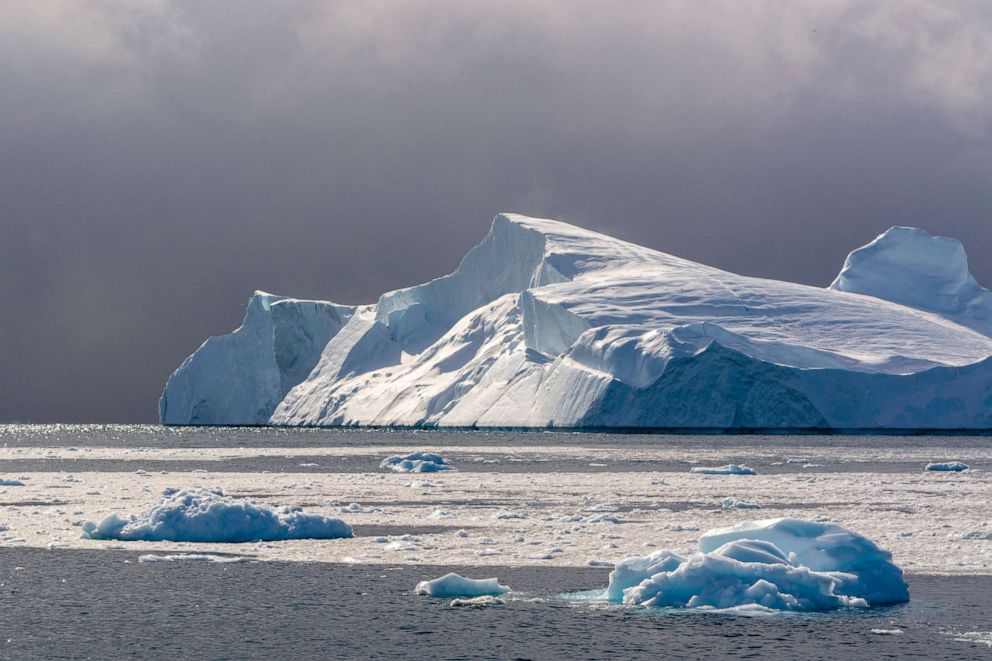
In addition, the average surface air temperature over the Arctic from October 2020 through September 2021 was the seventh-warmest on record. This is the eighth consecutive year since 2014 that air temperatures were at least 1 degree Celsius above the long-term average, according to the report.
The warming is occurring so swiftly that the Arctic Ocean is now acidifying faster than the global ocean and beavers are colonizing what was previously the Arctic tundra of western Alaska, which has experienced widespread greening, according to the report.

The Greenland Ice Sheet, the largest contributor to sea level rise in the world, experienced three melt episodes in late July and August, the report states.
Sea level rise will be one of the most disastrous consequences of global warming, as it erodes coastlines and eventually causes residents who live near the ocean inland, experts say.
Even if the rise seems minuscule -- about 8 inches since the Industrial Revolution, according to the Union of Concerned Scientists -- infrastructures located near the ocean were not built to withstand those levels, Schofield said.
Greenhouse gases will need to be significantly reduced
A multi-layered approach -- from policy to industry to the finance sector -- is needed to curb the necessary amount of greenhouse gases.
President Joe Biden made addressing climate change a major focus of his 2020 presidential campaign, re-joining the Paris Agreement on Inauguration Day. Climate change has also taken front stage in Biden's $1.7 trillion infrastructure package, $555 billion of which has been dedicated for climate and clean energy investments.
The world will need to re-think how it obtains its energy -- moving away from coal and natural gas and toward solar energy, wind farms, green hydrogen and electricity.
The U.S. auto industry is already making efforts to ramp up use of electric cars. In August, after declaring that the U.S. must “move fast” to win the world's car-making future, Biden announced a commitment from the auto industry to raise gas mileage and cut tailpipe pollution between now and 2026.
Ford expects 40% of its global sales to be fully electric by 2030, while General Motors is aiming to sell only electric passenger vehicles by 2035. Stellantis, formerly Fiat Chrysler, has also pledged that more than 40% of its sales will be from electrified vehicles by 2030.
The Associated Press contributed to this report.




